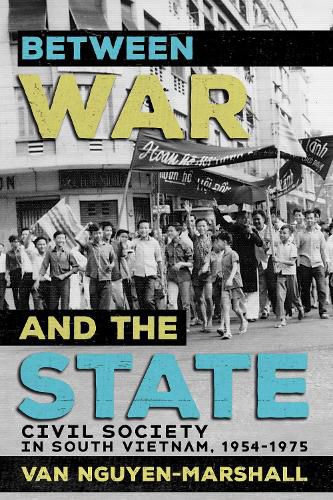Readings Newsletter
Become a Readings Member to make your shopping experience even easier.
Sign in or sign up for free!
You’re not far away from qualifying for FREE standard shipping within Australia
You’ve qualified for FREE standard shipping within Australia
The cart is loading…






In Between War and the State, Van Nguyen-Marshall examines an array of voluntary activities, including mutual-help, professional, charitable, community development, student, women's, and rights organizations active in South Vietnam from 1954 to 1975. By bringing focus to the public lives of South Vietnamese people, Between War and the State challenges persistent stereotypes of South Vietnam as a place without society or agency. Such robust associational life underscores how an active civil society survived despite difficulties imposed by the war, government restrictions, economic hardship, and external political forces. These competing political forces, which included the United States, Western aid agencies, and Vietnamese communist agents, created a highly competitive arena wherein the South Vietnamese state did not have a monopoly on persuasive or coercive power. To maintain its influence, the state sometimes needed to accommodate groups and limit its use of violence. Civil society participants in South Vietnam leveraged their social connections, made alliances, appealed to the domestic and international public, and used street protests to voice their concerns, secure their interests, and carry out their activities.
$9.00 standard shipping within Australia
FREE standard shipping within Australia for orders over $100.00
Express & International shipping calculated at checkout
In Between War and the State, Van Nguyen-Marshall examines an array of voluntary activities, including mutual-help, professional, charitable, community development, student, women's, and rights organizations active in South Vietnam from 1954 to 1975. By bringing focus to the public lives of South Vietnamese people, Between War and the State challenges persistent stereotypes of South Vietnam as a place without society or agency. Such robust associational life underscores how an active civil society survived despite difficulties imposed by the war, government restrictions, economic hardship, and external political forces. These competing political forces, which included the United States, Western aid agencies, and Vietnamese communist agents, created a highly competitive arena wherein the South Vietnamese state did not have a monopoly on persuasive or coercive power. To maintain its influence, the state sometimes needed to accommodate groups and limit its use of violence. Civil society participants in South Vietnam leveraged their social connections, made alliances, appealed to the domestic and international public, and used street protests to voice their concerns, secure their interests, and carry out their activities.